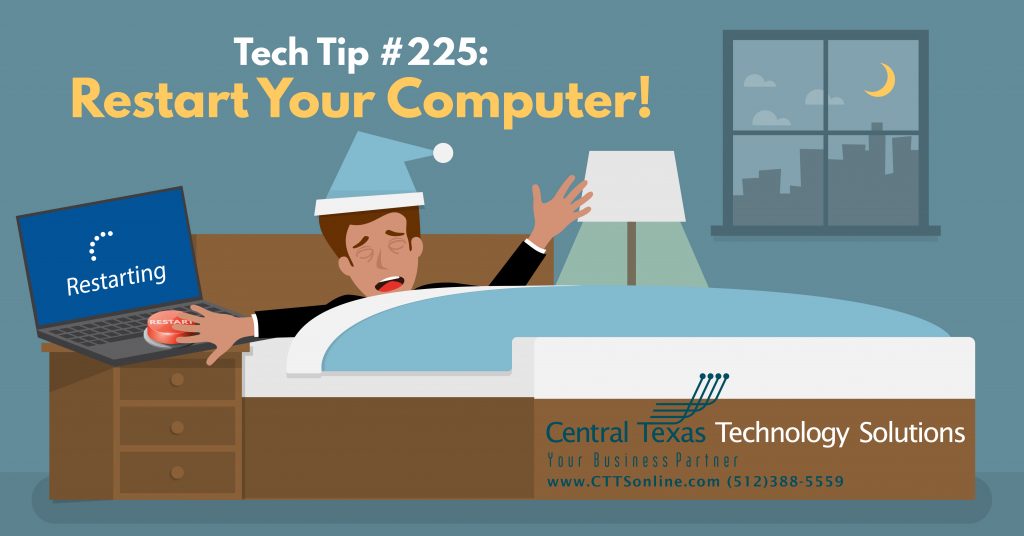 “Have you tried restarting your system yet?” We’ve all heard it when dealing with technical support personnel, and I’m sure we’ve all rolled our eyes at one point or another when confronted with that very question. While the advice to restart your system is a borderline meme/joke at this point, support personnel aren’t just asking it to have a laugh at your expense, or to buy ourselves some time. There’s a reason turning things off and back on again is usually the first step of any troubleshooting process, but why, exactly, is that?
“Have you tried restarting your system yet?” We’ve all heard it when dealing with technical support personnel, and I’m sure we’ve all rolled our eyes at one point or another when confronted with that very question. While the advice to restart your system is a borderline meme/joke at this point, support personnel aren’t just asking it to have a laugh at your expense, or to buy ourselves some time. There’s a reason turning things off and back on again is usually the first step of any troubleshooting process, but why, exactly, is that?
It’s Easy!
First and foremost, it is the easiest and most universal troubleshooting step in the book, and is certainly not limited to computer systems. Windows locking up? Reboot the system and see how things look. Cell phone acting sluggish? Restart that device a try again. Home WiFi seems slow? Power cycle that modem. Personally, I’ve even conducted a factory reset on my Keurig to clear up some coffee brewing issues, so it really can work just about everywhere.
Here are some of the times when rebooting your machine can help:
- If your computer feels hot
- If the fans inside your device are making excessive noise
- After a software or firmware update
- After you’ve installed new hardware
- You’re experiencing application crashes
- Things are freezing or taking longer then usual to respond
- A file or application won’t open
But How?
Ultimately, a restart is so effective because it completely flushes the systems Random Access Memory (RAM). System RAM is largely a repository of temporary data the device needs to perform the functions at hand. Think of it as the computer’s short-term memory, if that helps. As programs are opened/closed and operations are run, information is cycling in and out or RAM constantly, and, much like human short-term memory, sometimes confusion can be encountered and mistakes can be made. A mis-remembered name you just heard would be a human symptom, but a screen freeze, program crash, or dreaded blue screen could be what we encounter on our computer. Restarting the system forces a complete dump/removal of all of the temporary data in the system RAM, freeing up those resources, forces devices/applications to follow their normal ‘begin operation’ routine, and allows us to start from a clean slate – which is helpful from both a usability and troubleshooting stand point.
Two Flavors!
While a simple power off/power on routine will usually be enough to resolve most issues, it is important to know and recognize that it won’t always fix everything. As covered, restarting our system keeps all of its software and remembers its current state of existence, but a reset, or factory restore, will revert our device to the condition it was when it was first removed from the box, so to speak, necessitating the reinstallation and reconfiguration of all software and settings. As such, this is often only employed in dire situations, or when no other options are feasible.
If you're still experiencing issues with your system after a couple reboots, give CTTS a call today: (512) 388-5559. Your technology problems shouldn’t hinder your workflow. With CTTS you have a support team you can count on to drive your business forward, not hold it back.

By Brandon Kaylor
Desktop Support Technician
Central Texas Technology Solutions
